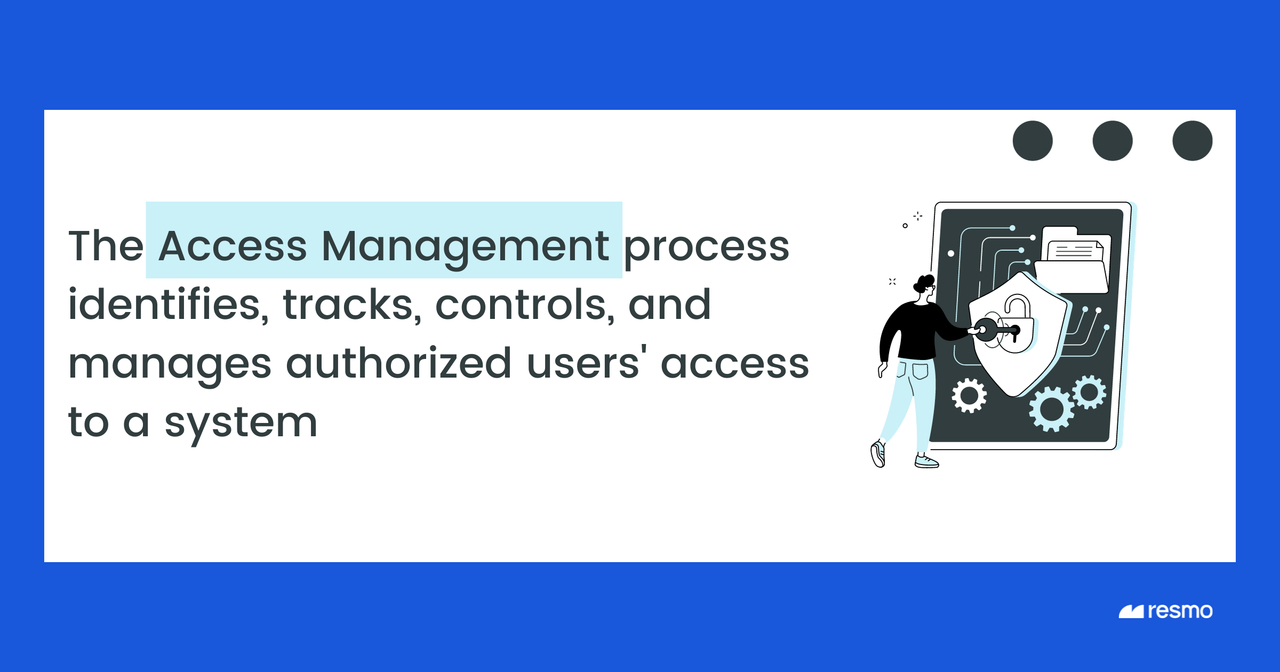
Access Management, also known as Identity and Access Management (IAM), is a critical aspect of information security that focuses on controlling and managing user access to IT resources, applications, and data based on policies and user roles. It plays a vital role in ensuring the confidentiality, integrity, and availability of sensitive information and digital assets within an organization.

Identity Management vs. Access Management
Identity management and access management are integral components of the broader Identity and Access Management (IAM) framework. Although they work together, they serve distinct purposes.
Identity management primarily focuses on authentication, verifying the identity of users, both internal and external, who are permitted to access an organization's IT resources. Its core function is to validate a user's identity to ensure they are indeed who they claim to be.
On the other hand, access management is primarily concerned with authorization. Its objective is to control user access to specific resources or data, ensuring that each user can only access the assets they are authorized to use. For example, one user may have permission to view a file, while another user might have permission to both view and modify it. Access management handles these permissions, ensuring that users can only interact with the resources they have been granted access to. This includes regulating actions like viewing, modifying, downloading, and replacing files as per the user's privileges.
Benefits of Access Management

- Cost Savings: By managing access effectively, organizations can avoid potential security incidents and data breaches, leading to cost savings associated with incident response and remediation.
- Compliance Adherence: Access Management supports compliance with data protection and industry regulations by enforcing strict access controls and monitoring user activities.
- Improved Productivity: Streamlining access to authorized resources reduces the time spent by employees on seeking approval or troubleshooting access issues, resulting in improved productivity.
- Better IT Governance: Centralized Access Management provides IT teams with greater visibility and control over user access, facilitating effective decision-making and risk management.
Implementing Access Management
- Discovery and Inventory: Conduct a comprehensive discovery of all user accounts and their associated access rights to create an inventory of permissions across IT resources.
- Centralized Administration: Establish centralized administration and management of user access to gain visibility and control over user privileges.
- Security Assessments: Regularly perform security assessments to identify and address vulnerabilities or excessive privileges, ensuring users have only the necessary access.
- Employee Education: Educate employees about the importance of maintaining strong passwords, recognizing phishing attempts, and adhering to access policies.
- Approved Access Catalog: Maintain a catalog of approved access rights, providing employees with a curated list of authorized permissions.
- Access Policies: Implement access policies that define the conditions under which users can access resources, ensuring they align with security and compliance requirements.
- Access Control Mechanisms: Utilize access control mechanisms such as Role-Based Access Control (RBAC) or Attribute-Based Access Control (ABAC) to enforce least privilege.
- Authentication Mechanisms: Implement multi-factor authentication (MFA) to add an extra layer of security beyond passwords.
- Access Reviews and Recertification: Conduct regular access reviews and recertification to ensure access privileges are up-to-date and justified.
- Monitoring and Auditing: Implement monitoring and auditing capabilities to track user activities and detect unauthorized access attempts.
Related Terms
Suggested Articles







